-
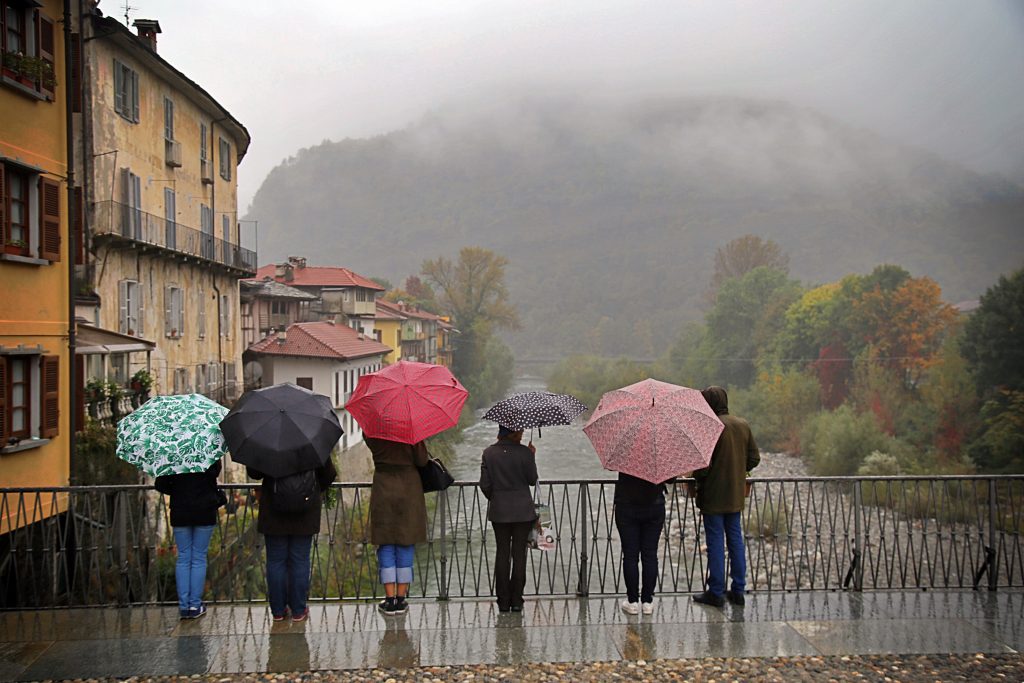
Varallo Sesia
Piedmont is a fairly unknown part of Italy, bordering France and Switzerland. But it is a highly significant region with very different foods from the rest of the country. Here they eat and grow, not pasta but rice.
Rice
-
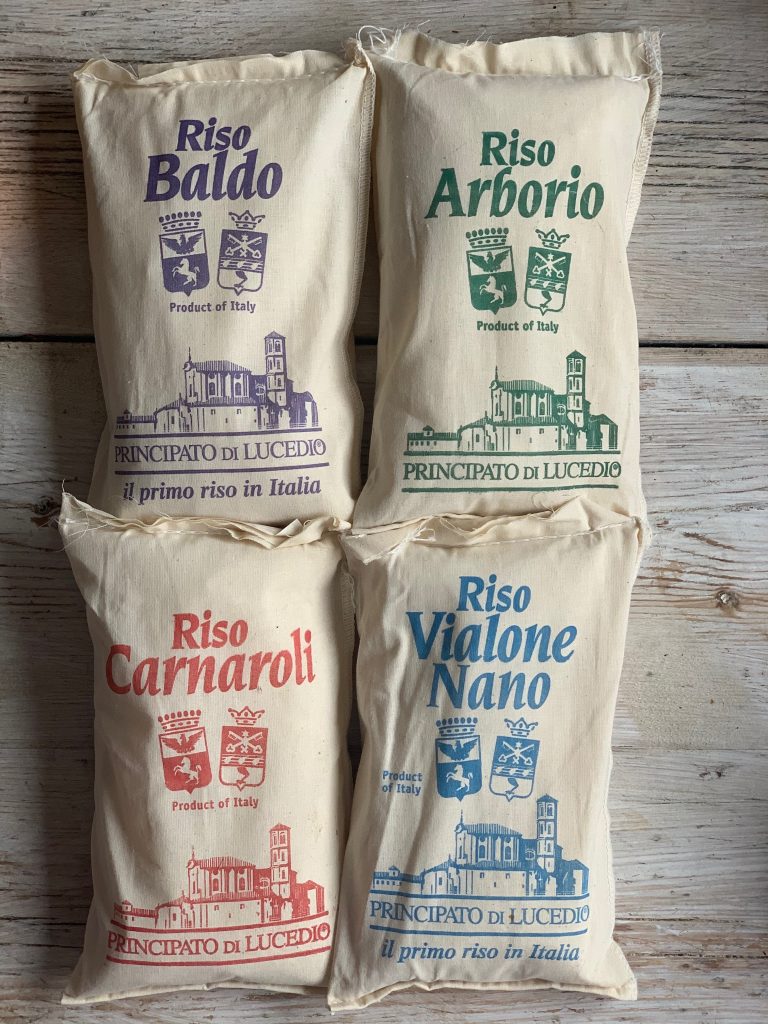
-
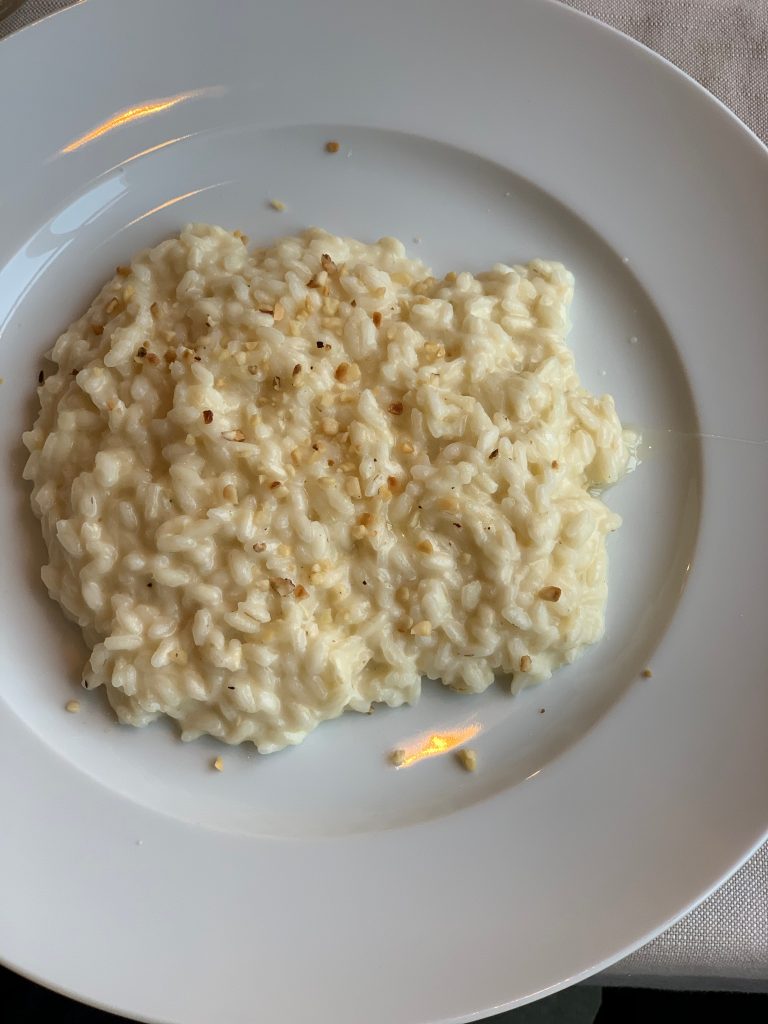
Hazelnut risotto
-
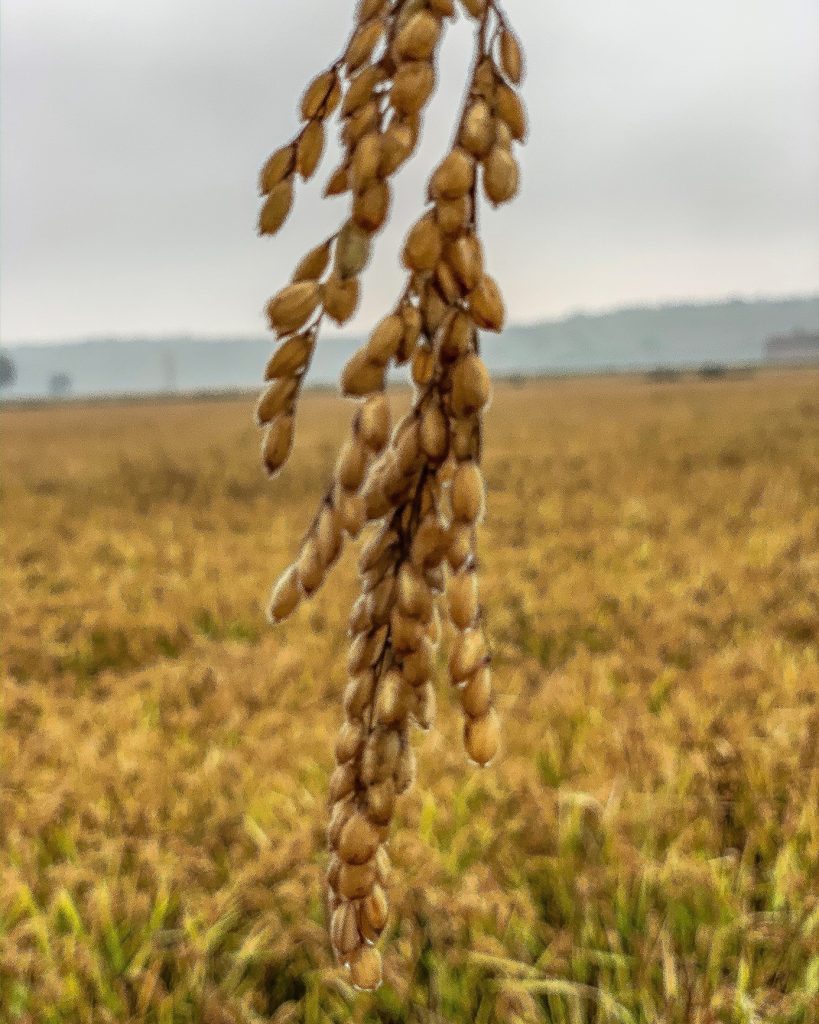
Risotto rice in the field -
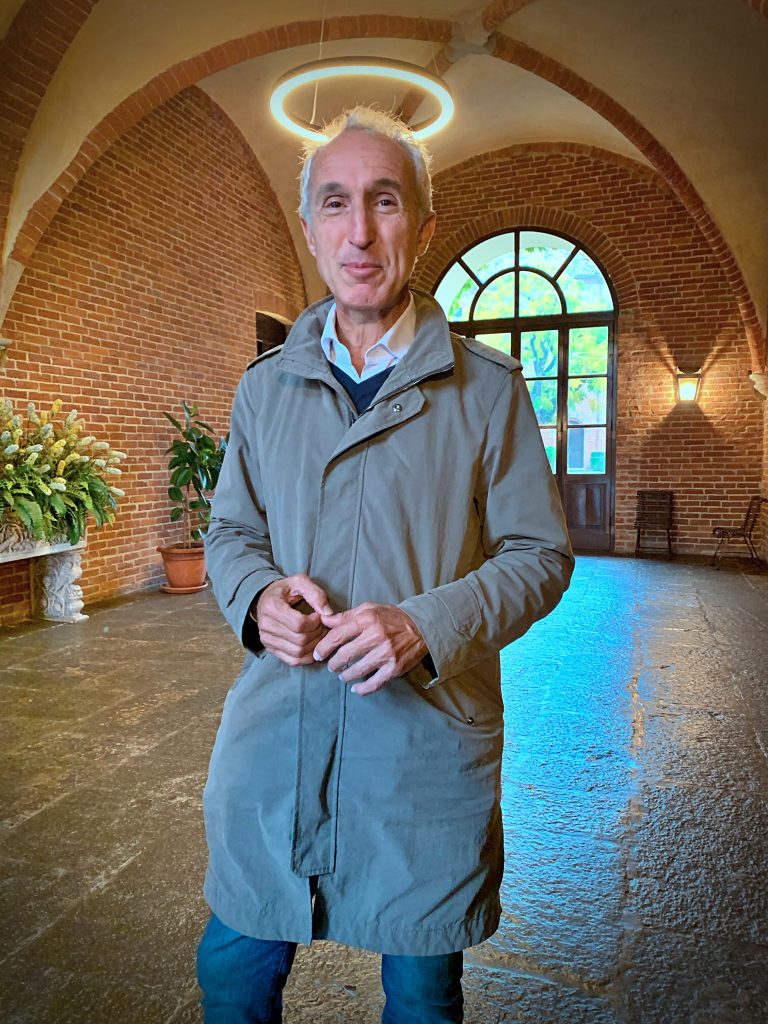
Count Paolo Salvadori di Wiesenhoff
Piedmont grows more rice than anywhere else in Europe but strangely, although they eat more rice than other Italians, nine kilos per annum compared to one kilo for the rest of Italy, it’s still not very much when compared to the Portuguese or the Spanish who eat around 20 kilos a year. I asked Count Paolo Salvadori di Wiesenhoff, owner of the Principato Di Lucedio, a rice farm in Vercelli, why that was?
“Because people have had very bad risotto in their childhood. They don’t use the correct rice and they don’t know how to cook it”.
Post-traumatic risotto syndrome then.
There are 200 Italian rice varieties but there are three main ones which are used for risotto: Carnaroli, Vialone Nano and Baldo. Note that I have not included Arborio, which is better suited to rice in soup.
On this trip I ate several kinds of risotto, with hazelnuts, saffron, and one topped with deep fried blue cheese veins (interesting). I have to admit, the thing that bothers me about risotto is that every mouthful tastes the same- so I tend to get bored. I don’t feel the same about pasta, a mouthful might have more or less sauce on it.
-
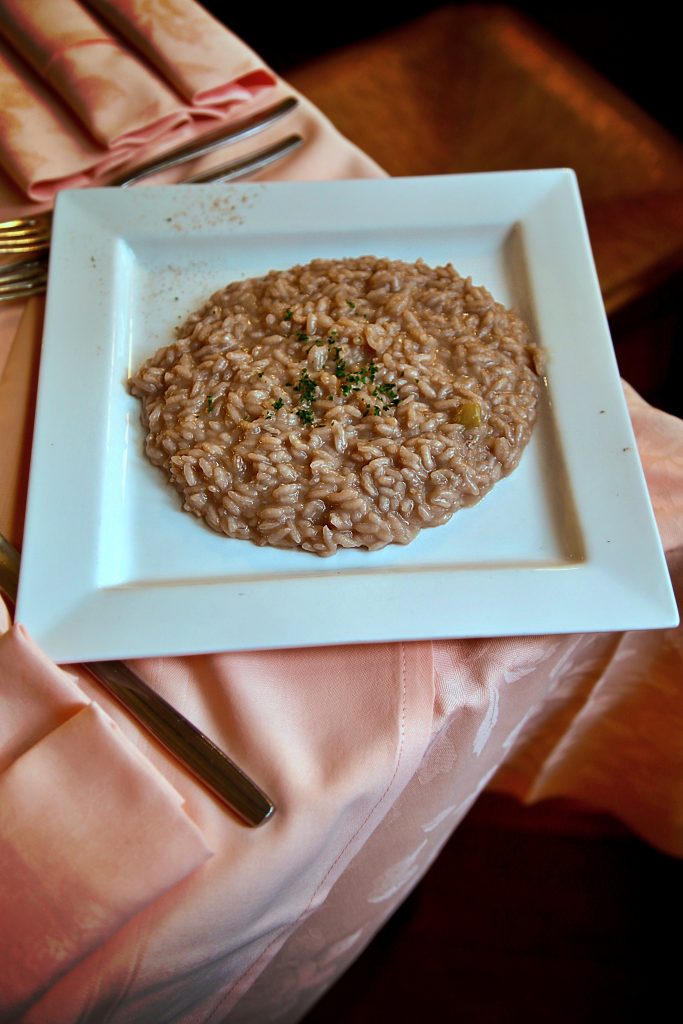
Barolo risotto -
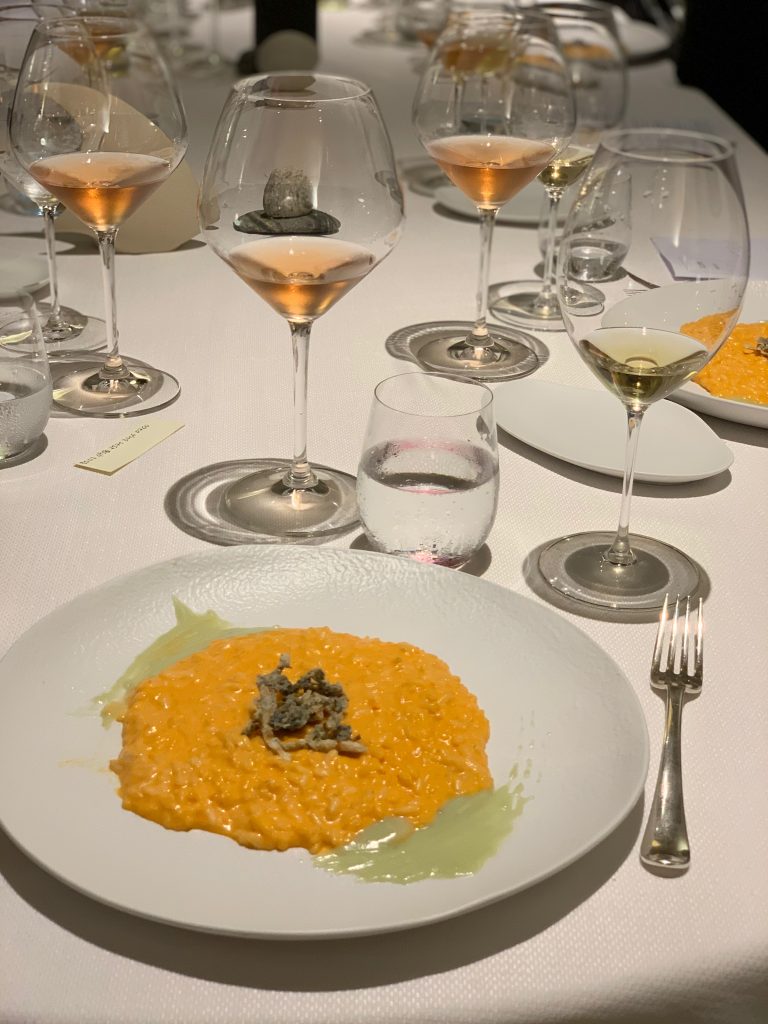
Saffron risotto
Cheese:
-
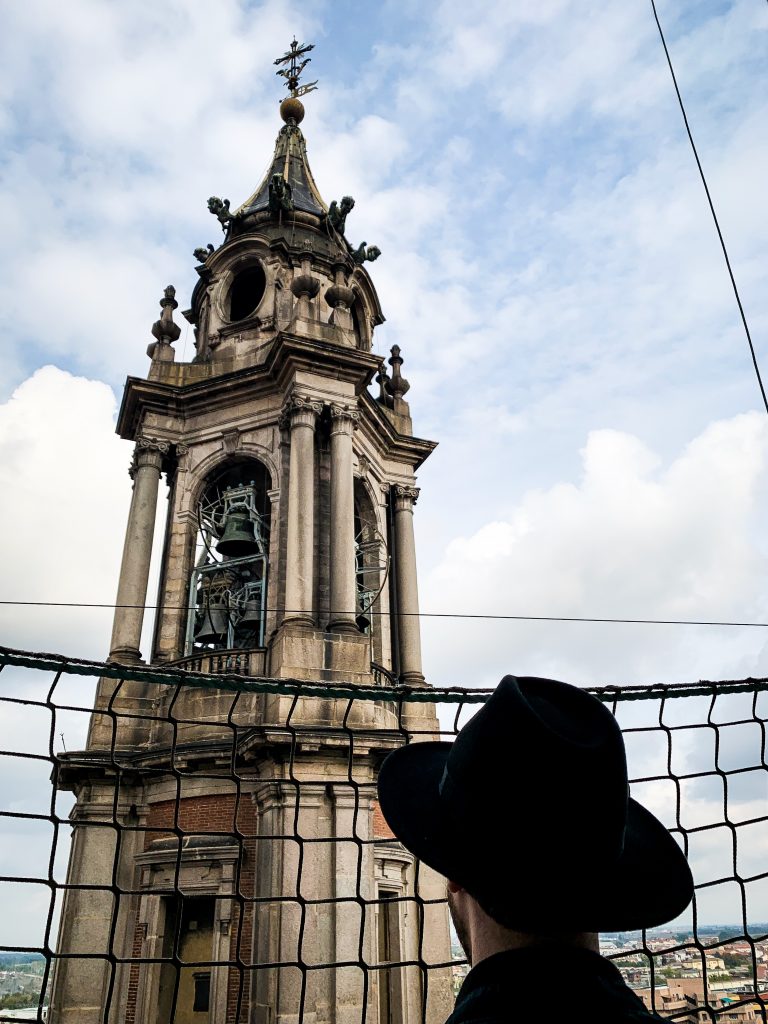
Bells of Novara -
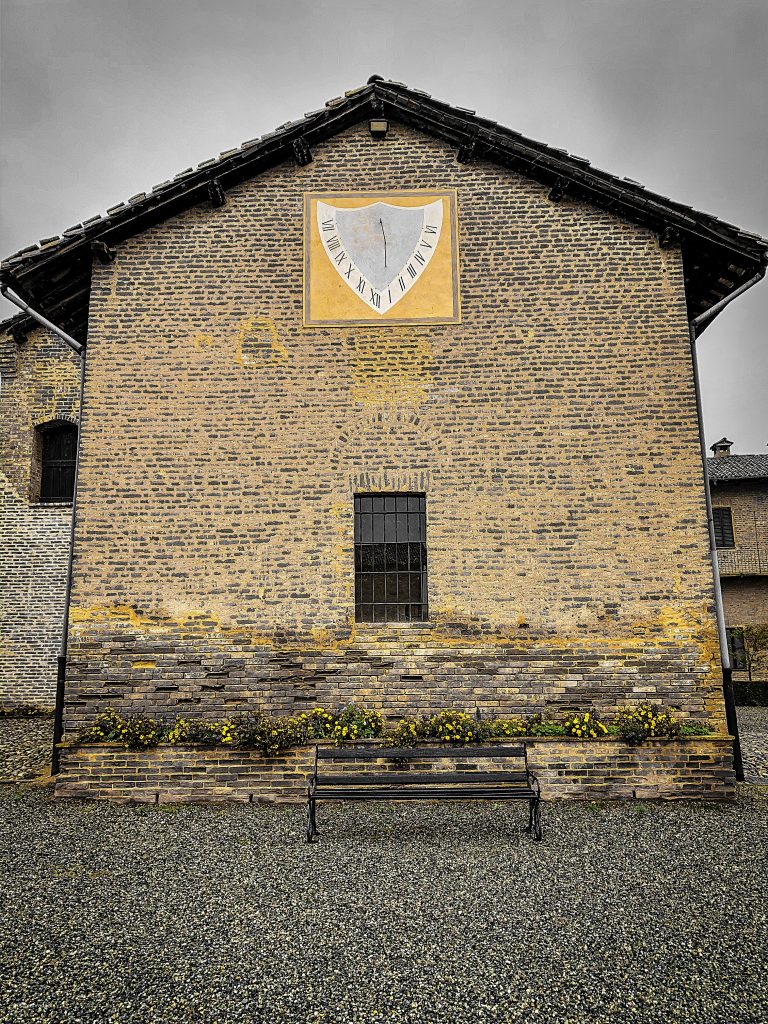
Principato di Lucedio, Vercelli
Piedmont is home to the soft blue cheese Gorgonzola of which there are two types, sweet and picante. I tried other local cheeses such as Piode, gorgeously creamy and dense, (wish I could have bought some), and Maccagno, similar to Tomme the French cheese or ‘Toma‘. In fact these last two cheeses are so local, from Vercelli, that you won’t find them mentioned on the internet. There are dozens of local cheeses that are virtually unknown outside the region. Italian food is nano local.
Biscuits
-
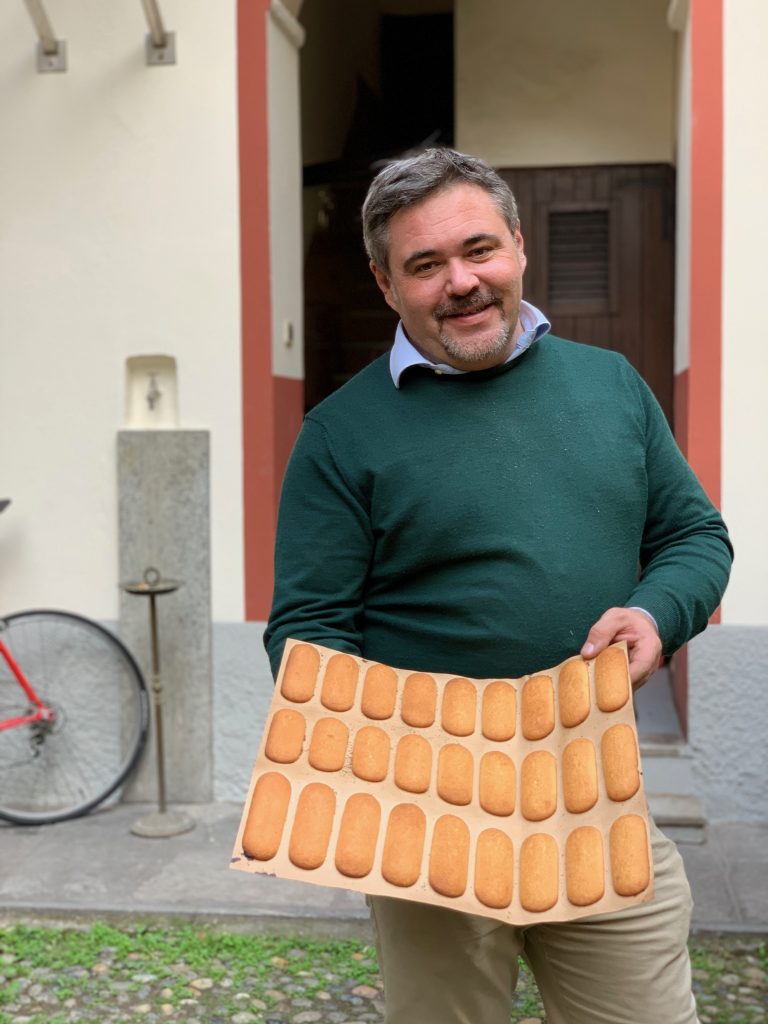
Baker Ambrogio Fasola -
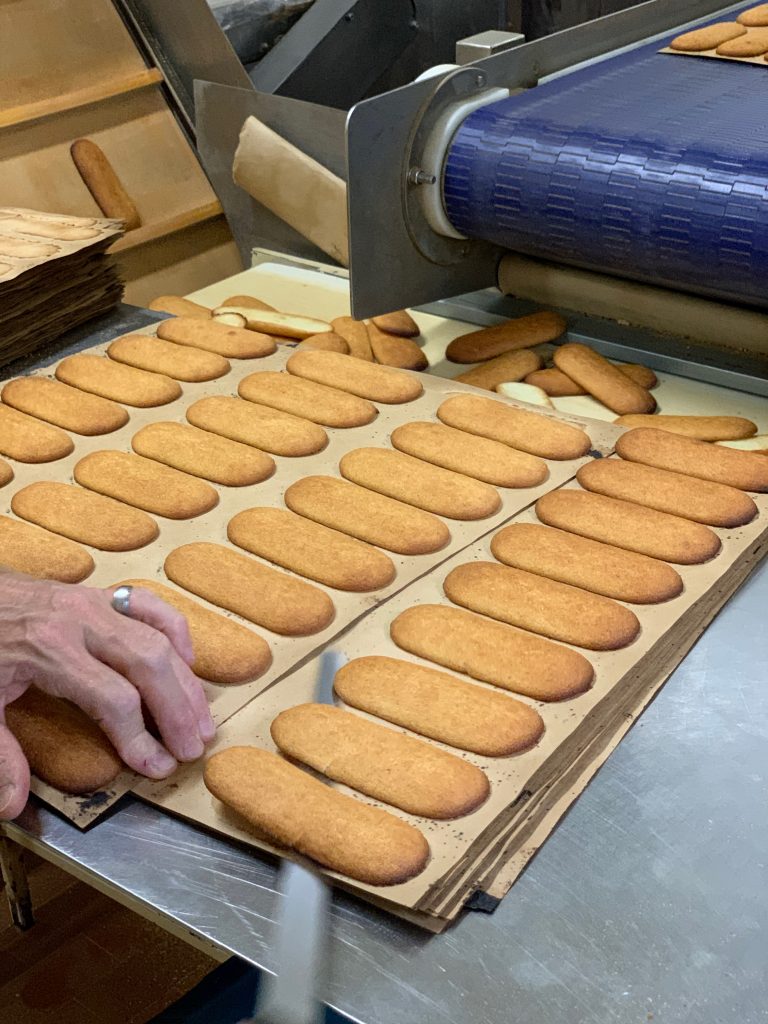
Camporelli
Officially known as Biscottini di Novara or Camporelli, these light sponge fingers are similar to Savoiardi. There are 100,000 inhabitants in Novara and this bakery sells 100k biscuits a day which means people eat at least one camporelli each per day. As well as dipped in coffee, they also are used in Tiramisu (recipe below), something I’ve always hated (soggy, thick and tasteless) but have come to like now I’ve created my own home-made version.
Visiting the bakery, the biscuits are baked on a specific parchment, first for 130 seconds and then, for a second time at 20 minutes. The shop also sells local chestnuts, made into ‘marrons glacées’.
Wine:
-
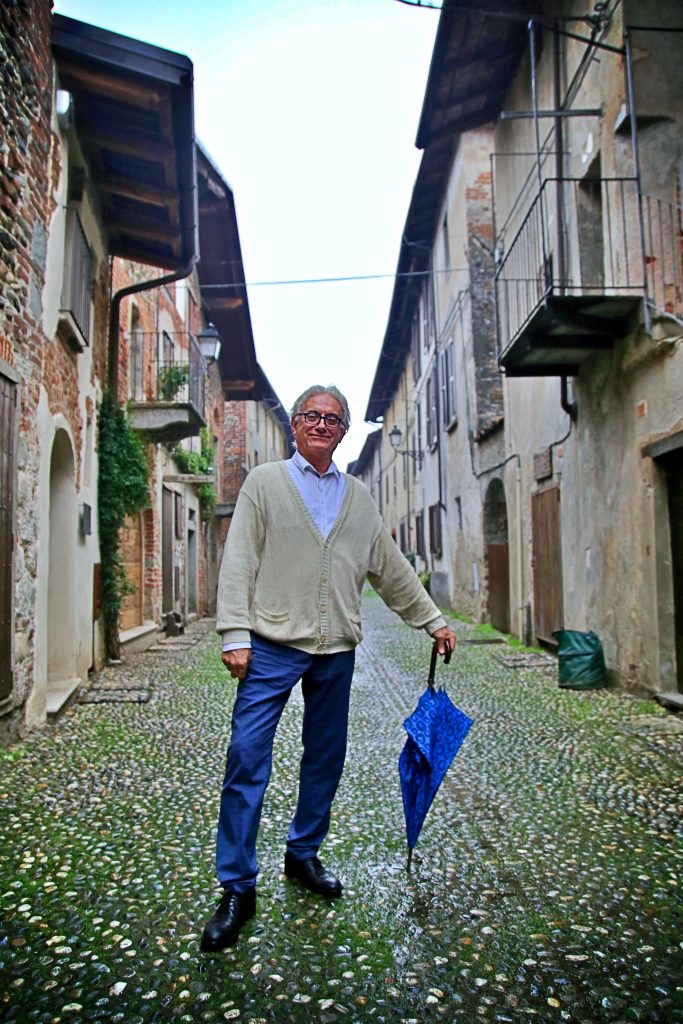
Antonello Rovellotti -
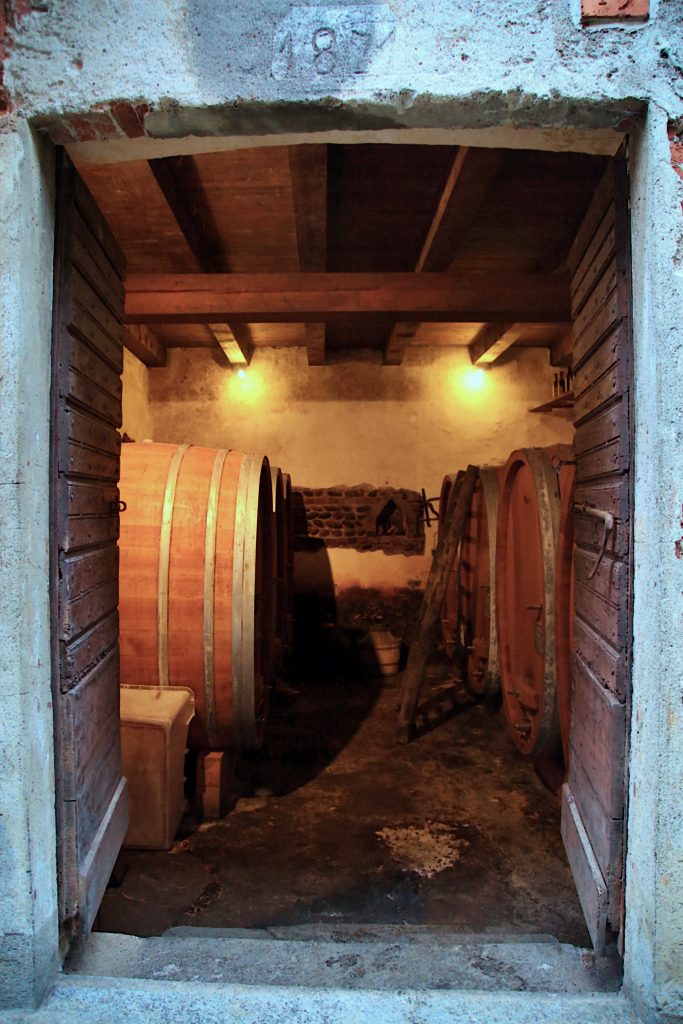
Italian barrels
Piedmont is celebrated for wines such as Barolo and Barbaresco from the Nebbiolo grape and Vespolina. In the 11th century fortified village of Ghemme I met dapper wine maker Antonello Rovellotti and his son who spoke perfect English (learnt, he claimed, entirely from video games). The Rovellottis started the winery in the 1972 ( the artist-designed wine labels reflect the Memphis-Milano style of the 80s). Book a wine tasting there via info@rovellotti.it
Long Alpine oak Italian barrels age in the cellars of the castle. They differ from French wine barrels: taller, oval, with a thick rim and containing more wine, 2,500 litres as opposed to 500 litres. Being larger, the wine ferments more slowly.
Other foods:
Pasta:
While this is primarily a rice eating area but they do have a local stuffed pasta shape. called ‘plin’, Italian for ‘pinch’, a small folded ravioli.
Insalata Russa is a popular starter in Piedmont consisting of diced boiled potatoes, carrots, peas and mayonnaise, similar to the Spanish ensalada russa tapas.
Chocolate:
Nearby Turin is the chocolate centre of Italy where they combine chocolate with another Piedmontese ingredient, hazelnuts, to make a dense and rich ‘gianduja’. Piedmont is the birthplace of Nutella, a chocolate hazelnut combination loved by children everywhere. In fact Nutella was originally called Pasta Gianduja. I make my own from scratch, recipe here.
-
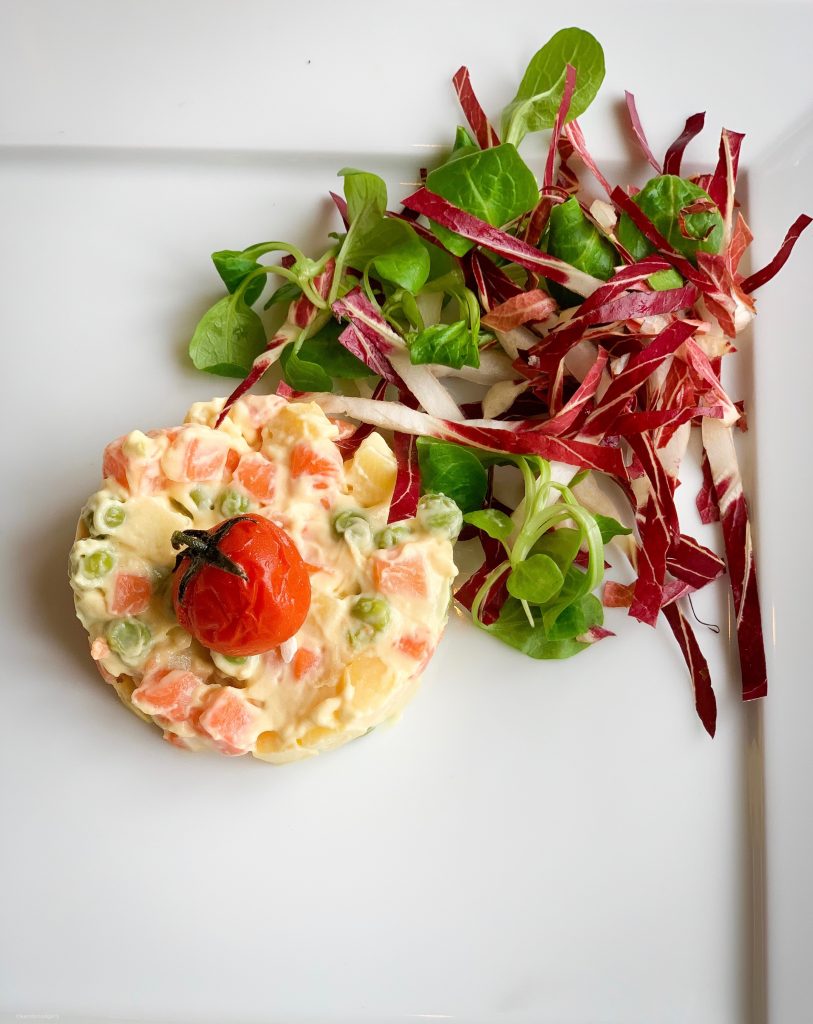
Insalata Rusa -
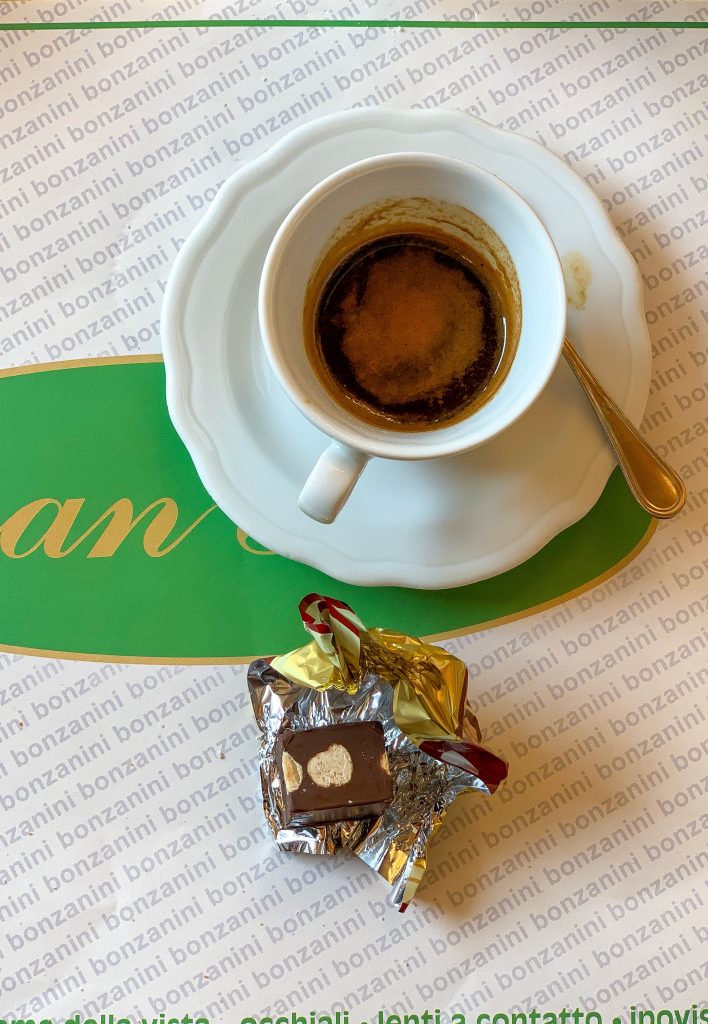
Gianduja chocolate
Restaurants:
-

Marta Grassi -
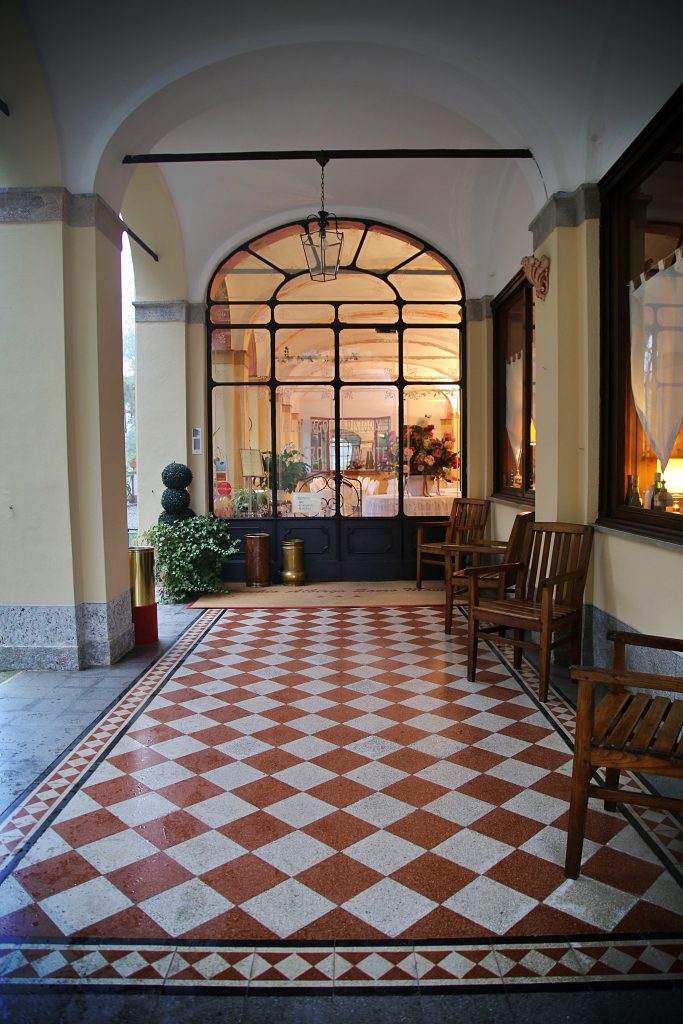
Vecchio Albergo restaurant, Sacro Monti
Chef Marta Grassi helms the Michelin star kitchen at Tantris in Novara. I liked her delicately plated food with big flavours, particularly the saffron risotto with the aforementioned deep fried blue cheese veins (just extracting the blue veins from the white cheese must have taken hours of prep). Her husband, sommelier Mauro Gualandris, runs front of house, pairing fine Piedmontese wines with Marta’s dishes. Neither of them are spring chickens and I pondered how they continue to have the energy to produce top notch cuisine on a nightly basis. But Marta started out as an Olympic level skier, so the woman is, at heart, an athlete!
Another enjoyable Piedmontese restaurant, Vecchio Albergo, was at the top of the Sacro Monte di Varallo mountain, which you access by cable car. We ate hot folded crepes filled with melted cheese known as ‘miacce’ in Valsesiano dialect, risotto (of course), river trout and a Piedmontese dessert called ‘Bunnet’, a kind of chocolate creme caramel.
Religious Architecture
Piedmont is also renowned for the religious architecture. Do visit Sacro Monte di Varallo, perhaps at Halloween, as it is one of the spookiest places I’ve ever visited. On a misty hillside, hovering gloomily above the small town of Varallo Sesia, (painted in 18th century Farrow and Ball type colours as ordered by the local council), there are 45 chapels. It’s kind of a mini-pilgrimage (and located on the Camino San Carlo which joins up with the Camino de Santiago), with pathways and gardens winding through small separate buildings. Each one has a screen through which you can peer at wooden or plaster models of religious scenes or animals. You could spend a whole day just wandering around enjoying the gothic atmosphere, the Italianate buildings and the nature. The cable car to ascend is just opposite a 15th century temple Santa Maria Delle Grazie which has a painted altar screen taking up the whole breadth of the church dividing the public space from an area where nuns worship. I saw a couple of ancient nuns bustling around in the wax-scented candlelit murk. The wooden screen, called a tramezzo, is painted by renaissance artist Gaudenzio Ferrari, influenced by Da Vinci.
-
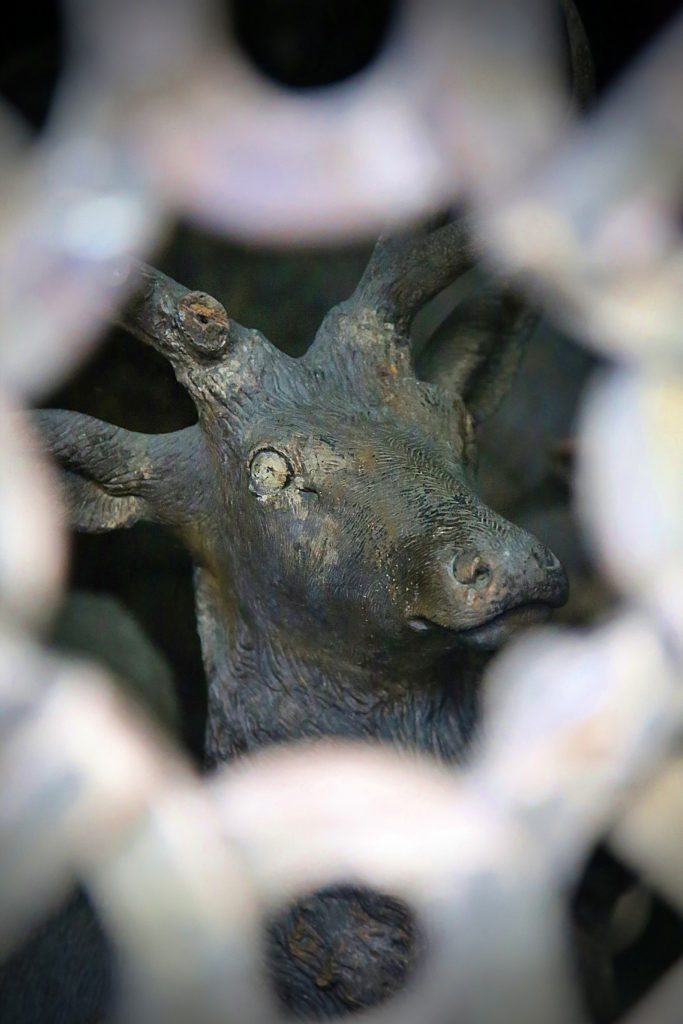
Sacro Monte -
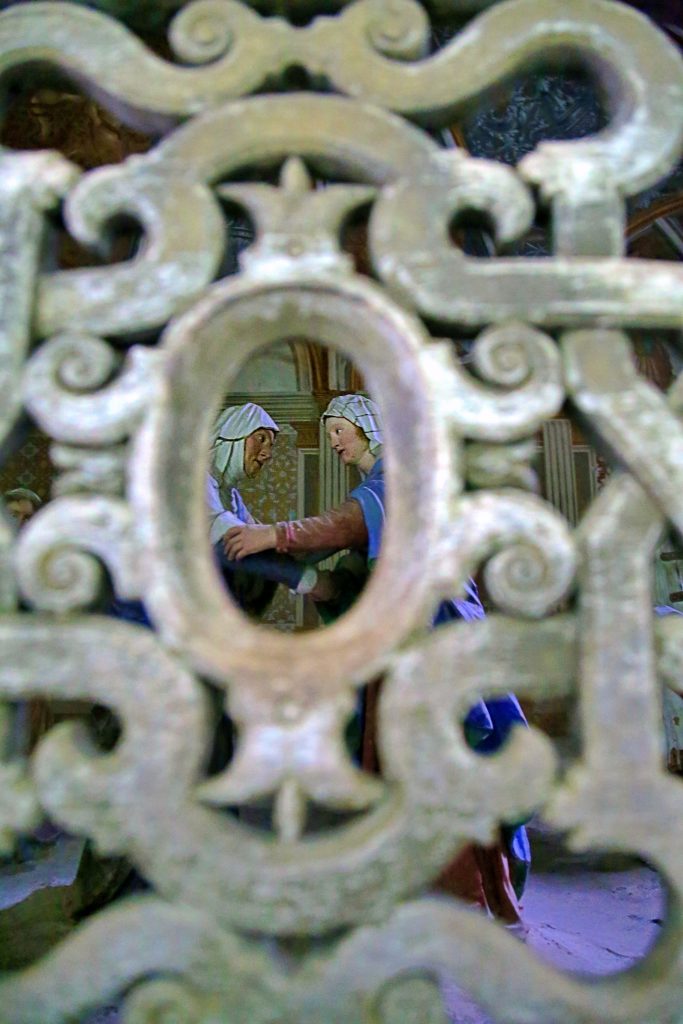
Sacro Monte
-
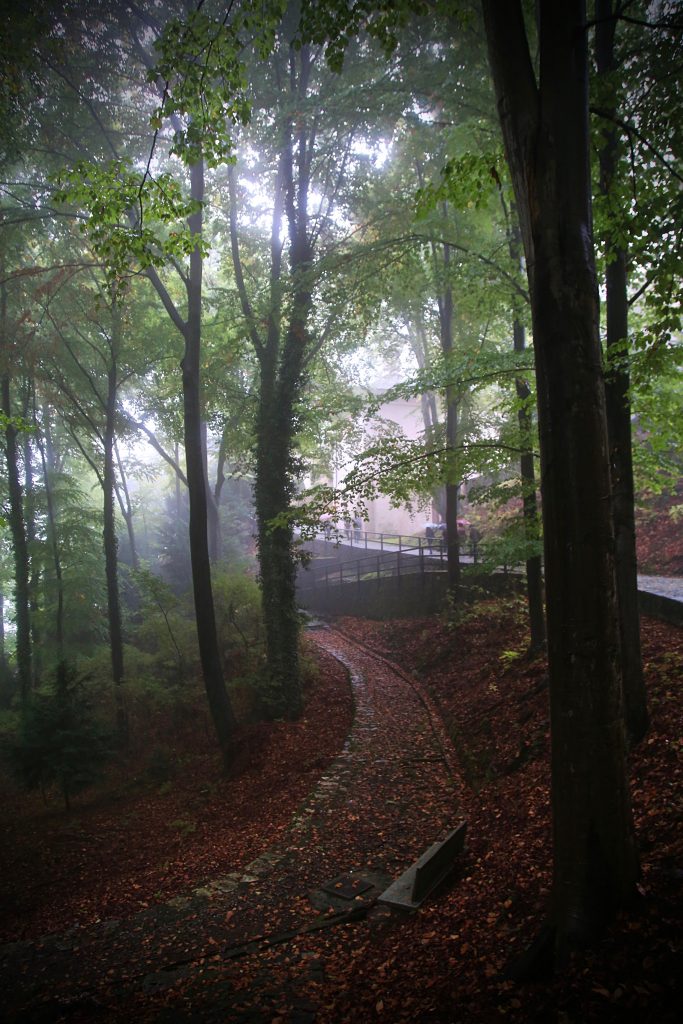
Sacro Monte -
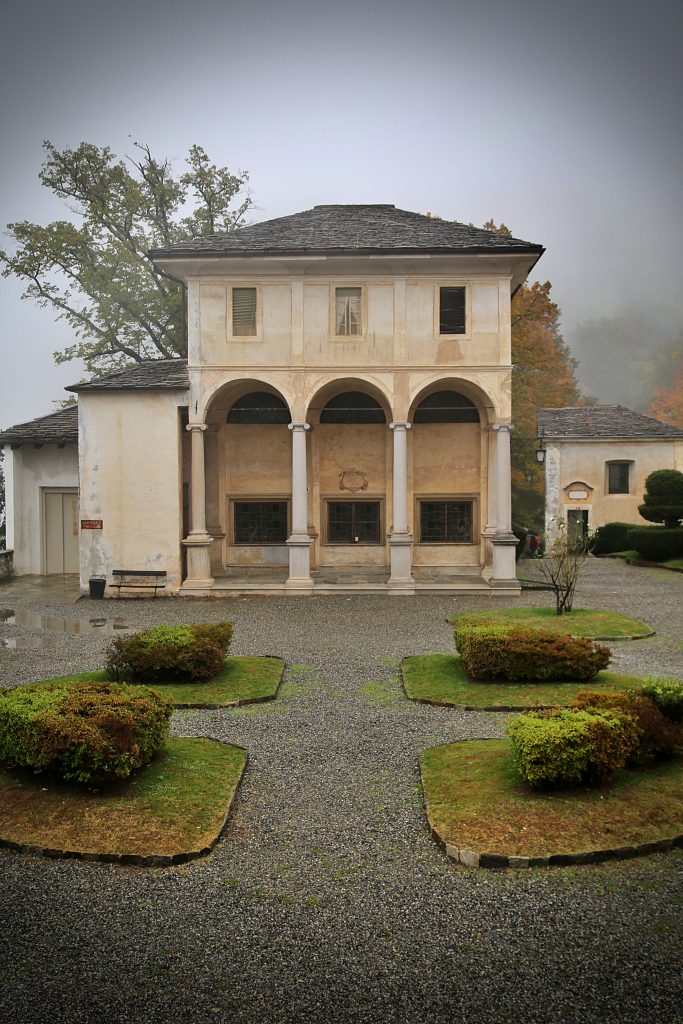
Sacro Monte
We were lucky enough to be guided by Piedmont Lonely Planet author Giacomo Bassi to other religious buildings. He referred to the red brick Romanesque/Norman church San Nazzaro Sesia as a medieval ‘panic room’ where everyone would hide during invasion.
Another town in Piedmont with intriguing religious architecture is the town of Vercelli which dates from 600 AD. Surrounded by risotto rice paddies and Nebbiolo vineyards, you can see an ancient synagogue, cathedrals, churches and towers. Take mosquito repellent in summer.
-

Giacomo Bassi -
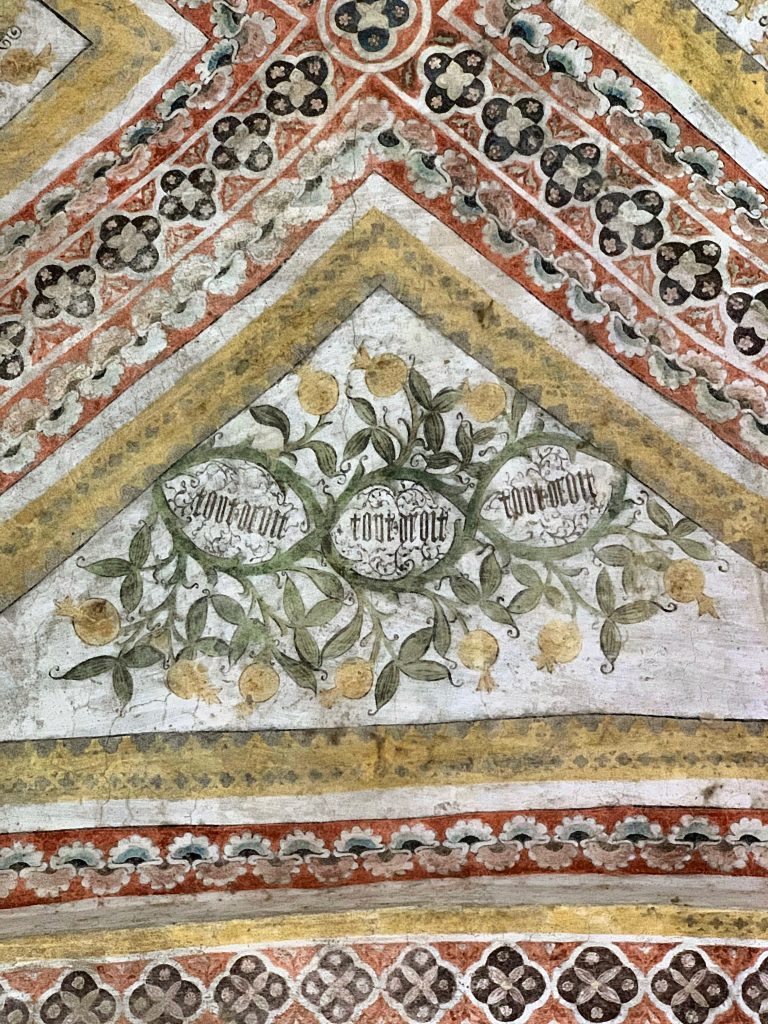
Beautiful pomegranate ceilings
-
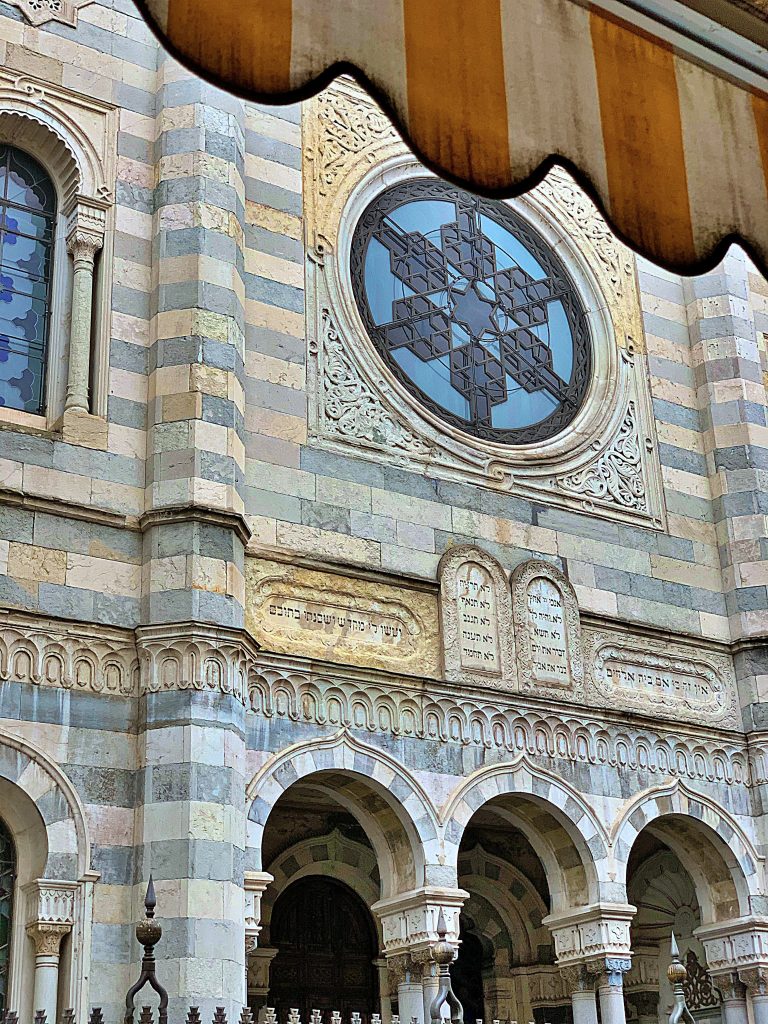
Synagogue in Vercelli -
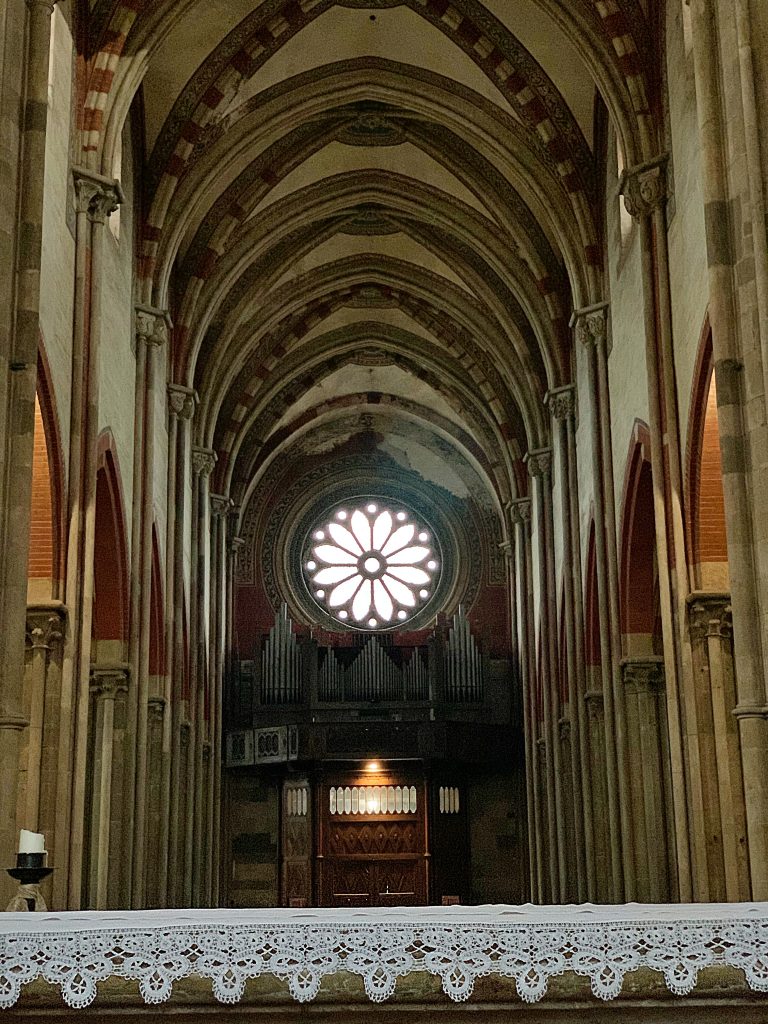
Cathedral in Vercelli, Piedmont
-

Cathedral in Vercelli -
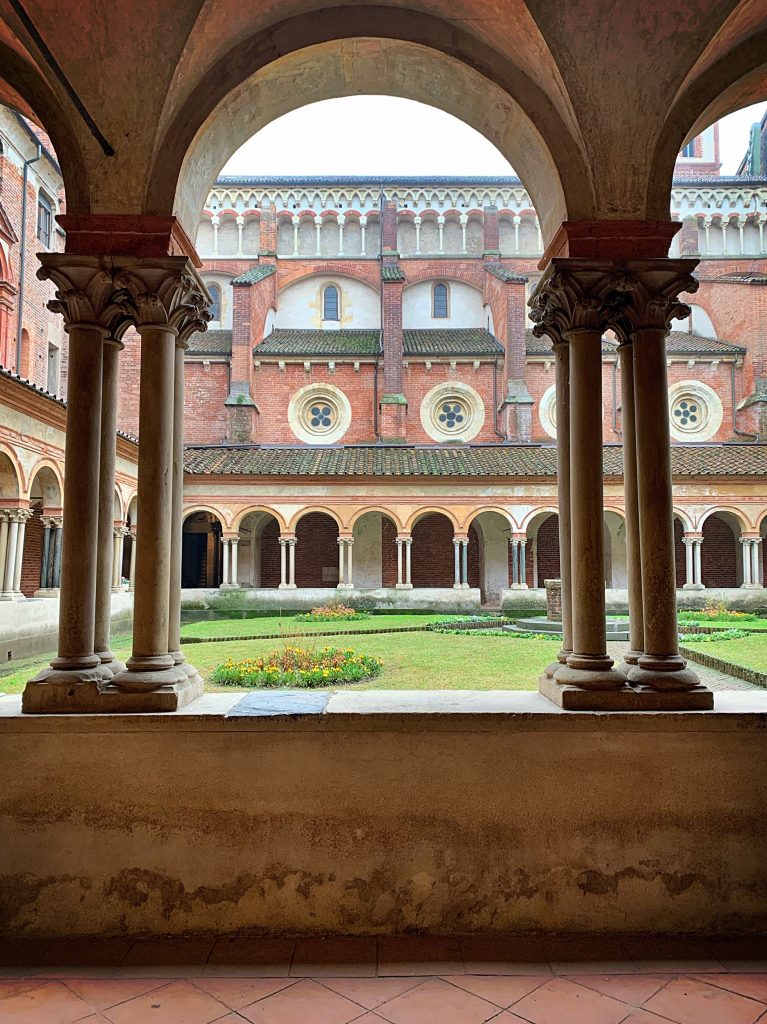
Monastery in Vercelli
-
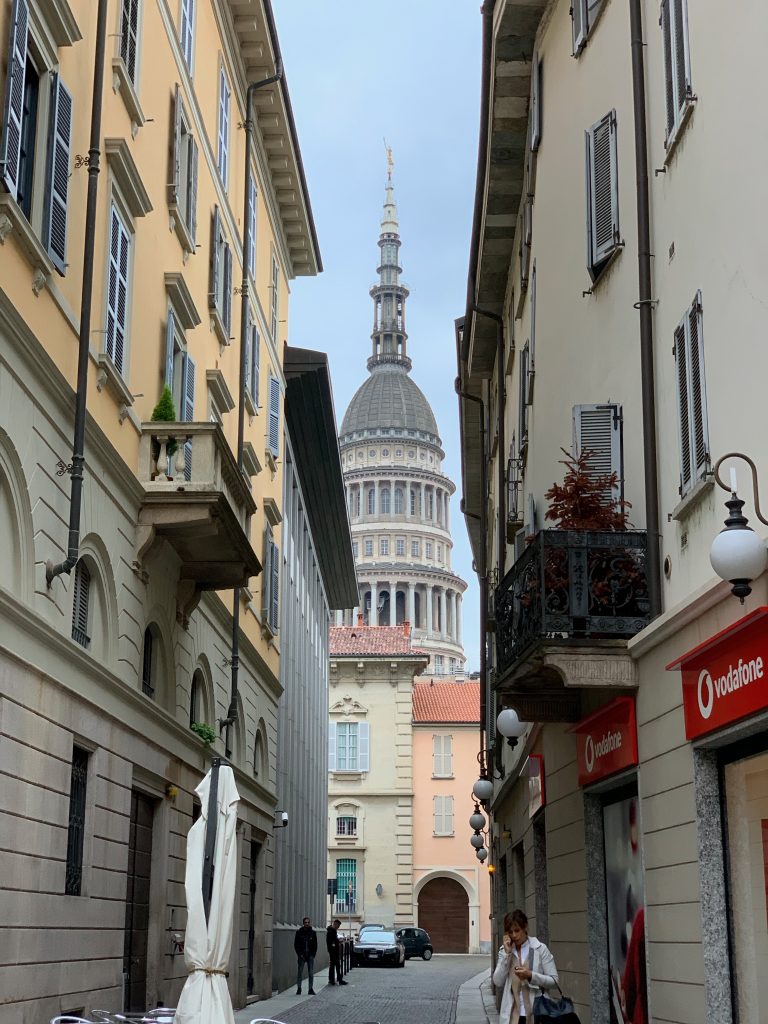
Novara, Piedmont -
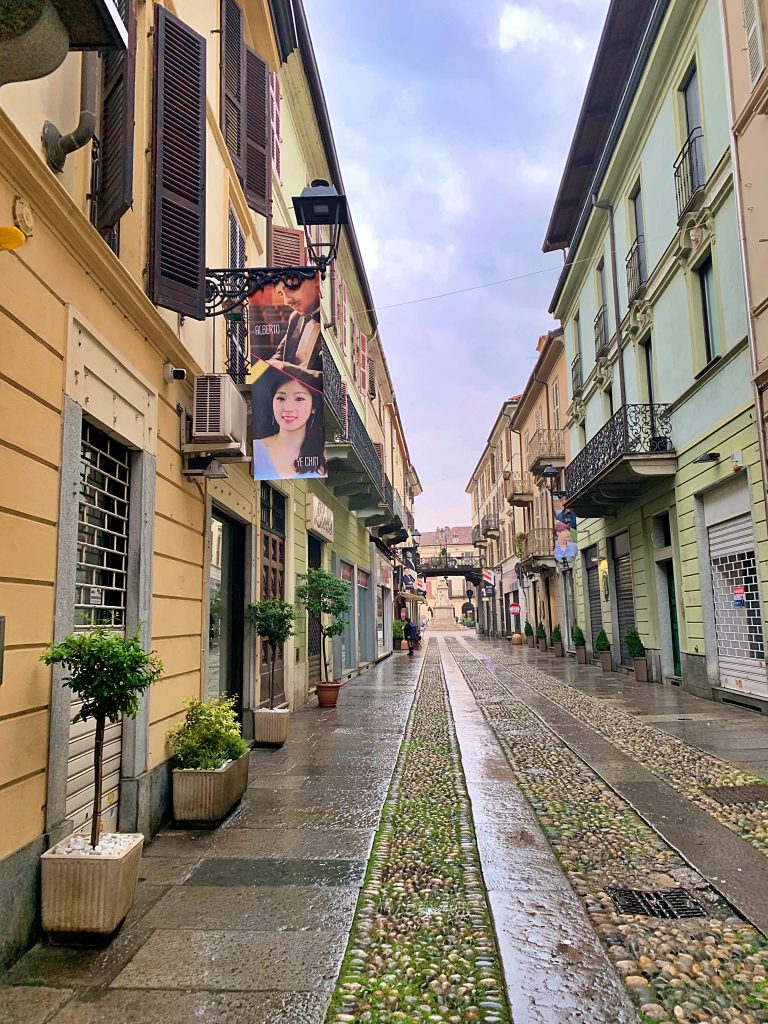
Vercelli, Piedmont
-
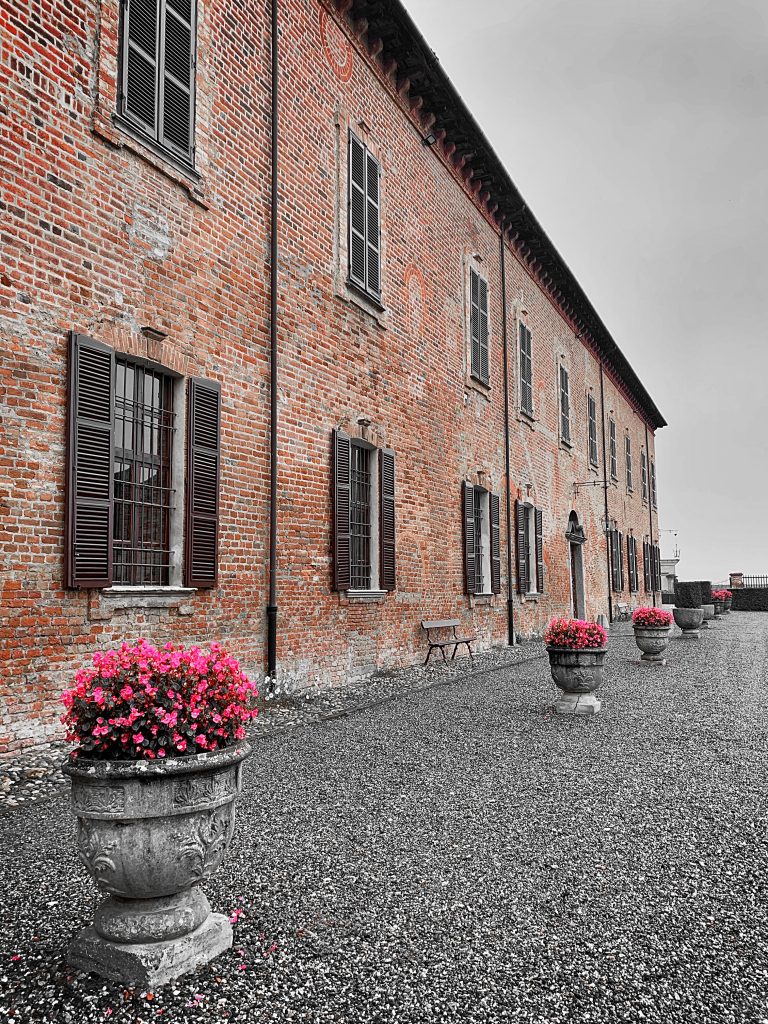
Principato di Lucedio -
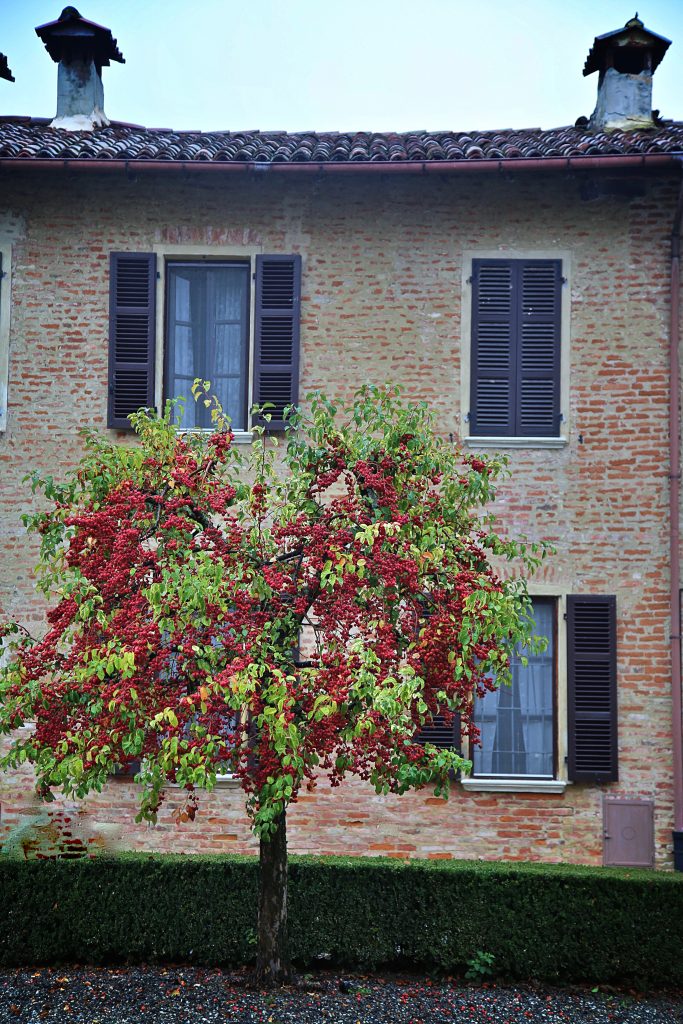
crabapple tree
Recipes
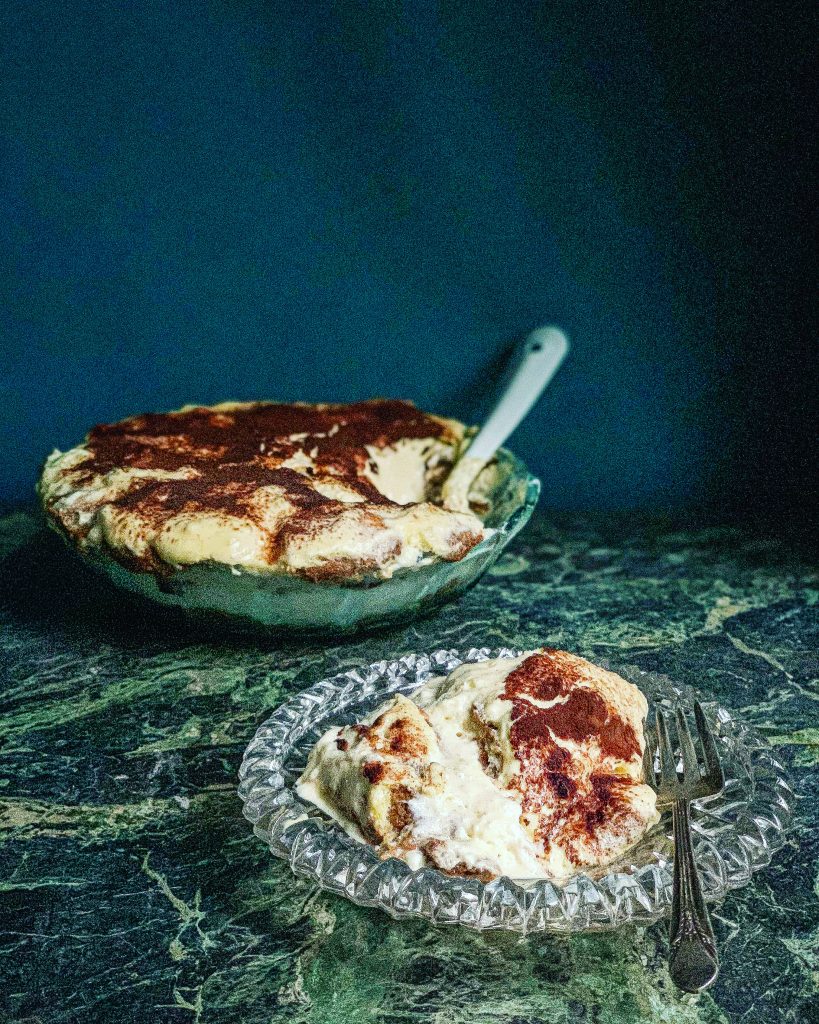
Tiramisù recipe
Ingredients
- 75 ml black coffee
- generous slug rum or kahlua
- 3 eggs, separated
- 60 g caster sugar/vanilla sugar
- 400 g mascarpone or thick double cream
- 24 camporelli biscuits, savoiardi style sponge fingers
- cocoa or chocolate powder or actual shaved chocolate, to dust
Instructions
- Make the coffee. You can also use Camp Coffee syrup. When cool, add the rum.
- Whisk the egg yolks and sugar together. Add the mascarpone. If using cream, whisk it until thick.
- Whisk the whites together until thick and cloudy.
- Fold the white into the egg yolk/cream mixture.
- Dip the biscuits into the coffee mixture. Do it briefly or they fall apart.
- Add in layers to the glass dish. Alternate a layer of biscuits, then a layer of cream mixture.
- Dust with cocoa or chocolate powder on top of the cream layers.
- Finish with a cream and cocoa layer.
- Chill in the fridge for 24 hours at least.
- Serve cold with coffee.
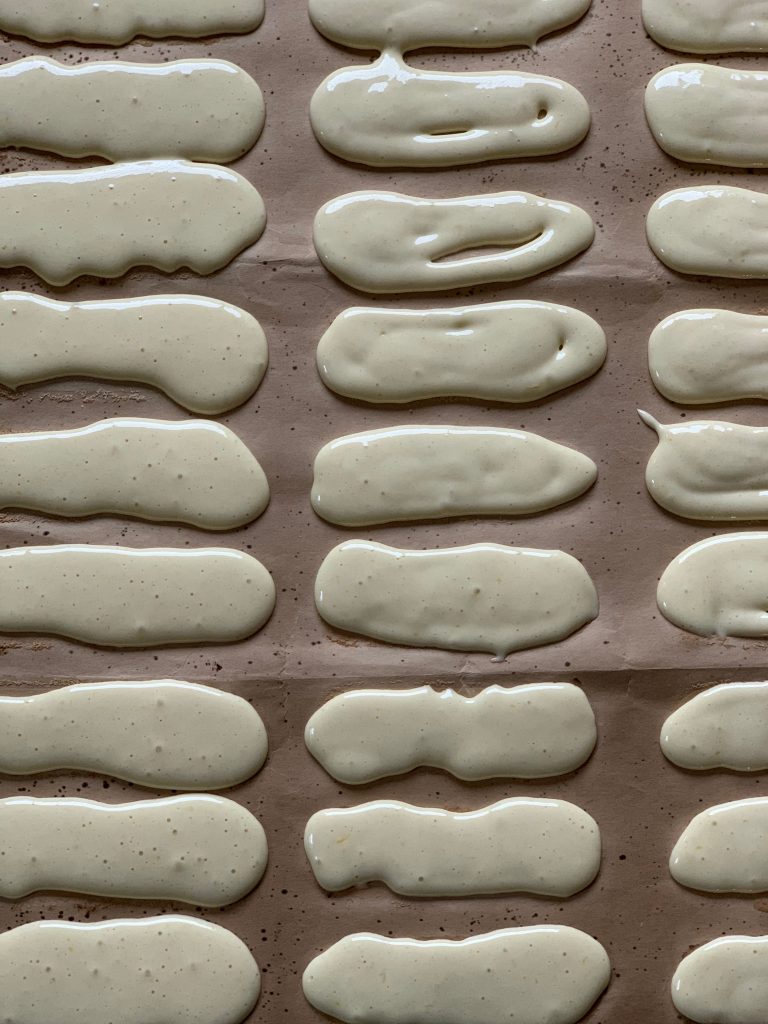
Biscottini di Novara or Camporelli or Italian sponge fingers recipe
Ingredients
- 5 large eggs. (Use good quality eggs with yellow yolks like Burford Browns)
- 250 g caster sugar
- 1 tsp vanilla paste (optional)
- pinch sea salt
- 250 g 00 flour, sponge flour or plain flour
- 1 tsp baking powder
- extra caster sugar for sprinkling on top
Instructions
- Preheat the oven to 180C
- Beat the eggs and the sugar together.
- Sift the flour, salt and baking powder together into a bowl. I don't usually sift flour, most modern flour doesn't have lumps but I did in this case because I wanted a light texture.
- Mix the egg/sugar and flour mix together.
- Place the mixture into a piping bag.
- Pipe 6cm or 4 inch lines of the batter, with 4cm/2 inch separating them. The batter spreads so make sure there are gaps.
- Sprinkle, with a tea strainer or small sieve, extra caster sugar all over the piped biscuits. This will give the characteristic sugary top.
- Leave to settle for a few minutes then bake for 10 to 15 minutes, or until golden, checking regularly.
- Leave to cool, then peel the biscuits off the silpat.
This trip was sponsored by Visit Novara and Visit Piedmont. I recommend you do both! Italy is endlessly fascinating.





Leave a Reply